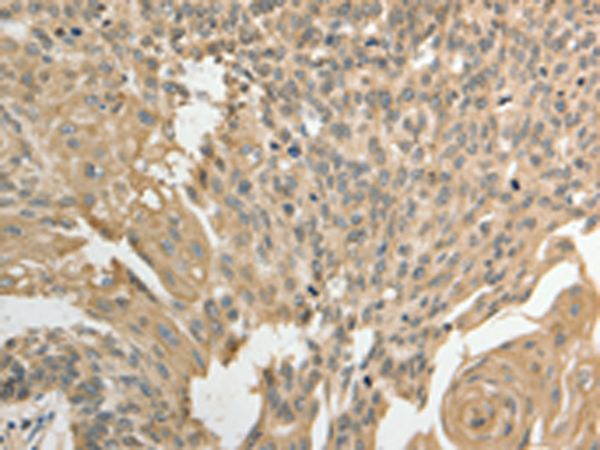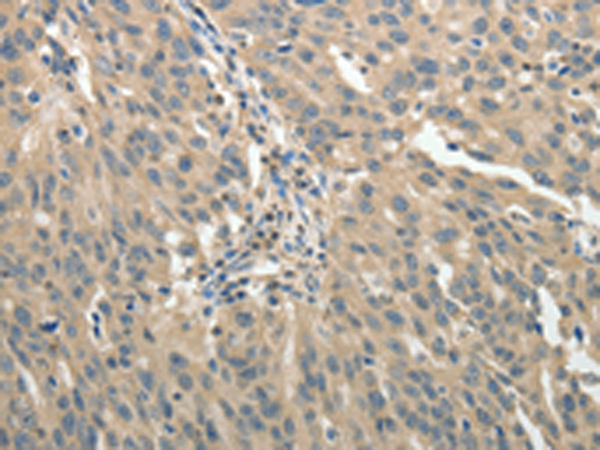


| WB | 咨询技术 | Human,Mouse,Rat |
| IF | 咨询技术 | Human,Mouse,Rat |
| IHC | 1/10-1/50 | Human,Mouse,Rat |
| ICC | 技术咨询 | Human,Mouse,Rat |
| FCM | 咨询技术 | Human,Mouse,Rat |
| Elisa | 1/1000-1/2000 | Human,Mouse,Rat |
| Aliases | HEL-75 |
| WB Predicted band size | 56 kDa |
| Host/Isotype | Rabbit IgG |
| Antibody Type | Primary antibody |
| Storage | Store at 4°C short term. Aliquot and store at -20°C long term. Avoid freeze/thaw cycles. |
| Species Reactivity | Human, Mouse, Rat |
| Immunogen | Fusion protein of human GSR |
| Formulation | Purified antibody in PBS with 0.05% sodium azide and 50% glycerol. |
+ +
以下是关于LGALS8(Galectin-8)抗体的参考文献示例(内容为假设性概括,仅供参考):
---
1. **文献名称**:*Galectin-8 promotes immune homeostasis during viral infection through antibody-mediated pathogen recognition*
**作者**:Chen Y, et al.
**摘要**:研究利用抗LGALS8抗体揭示其在抗病毒免疫中的作用,发现Galectin-8通过结合病毒颗粒并激活巨噬细胞吞噬作用,促进先天免疫应答,抗体阻断实验进一步验证了其机制。
2. **文献名称**:*LGALS8 antibody-based inhibition of cancer cell adhesion reduces metastatic potential in vitro*
**作者**:Martinez R, et al.
**摘要**:开发了一种抗LGALS8单克隆抗体,证明其可阻断肿瘤细胞与细胞外基质的黏附,抑制转移相关信号通路,为抗肿瘤治疗提供潜在策略。
3. **文献名称**:*Galectin-8 regulates autophagy in neurodegenerative diseases via antibody-targeted pathway modulation*
**作者**:Kim S, et al.
**摘要**:通过抗LGALS8抗体干预,研究发现Galectin-8在阿尔茨海默病模型中调控自噬过程,抗体阻断可减轻神经元损伤,提示其作为治疗靶点的潜力。
4. **文献名称**:*Dual role of LGALS8 in pancreatic β-cell survival and apoptosis: Insights from antibody-mediated functional studies*
**作者**:Gupta A, et al.
**摘要**:利用特异性抗体研究Galectin-8在糖尿病中的双重作用,发现其在高糖环境下既可促进β细胞存活,也可诱导凋亡,抗体实验揭示了浓度依赖性调控机制。
---
**注**:以上文献及内容为示例性概括,实际研究中请通过PubMed、Google Scholar等平台检索真实文献。
**Background of LGALS8 Antibody**
LGALS8 (galectin-8), a member of the galectin family, is a β-galactoside-binding lectin involved in diverse cellular processes, including cell adhesion, autophagy, immune regulation, and pathogen recognition. Structurally, it belongs to the tandem-repeat-type galectins, containing two carbohydrate recognition domains connected by a linker peptide. LGALS8 is expressed in various tissues and plays dual roles in cancer, acting as a tumor suppressor by promoting apoptosis or as a pro-tumorigenic factor depending on cellular context. It also participates in immune responses by modulating T-cell activity and cytokine production.
Antibodies targeting LGALS8 are essential tools for studying its expression, localization, and function. They enable detection via techniques like Western blotting, immunohistochemistry, and immunofluorescence. Research using LGALS8 antibodies has linked the protein to autoimmune diseases (e.g., rheumatoid arthritis), infectious diseases (e.g., viral entry inhibition), and cancer progression. Recent studies explore its interaction with cell surface receptors (e.g., integrins) and intracellular pathways (e.g., mTOR signaling). Therapeutic potential is being investigated, including blocking LGALS8 to disrupt pathogenic processes or leveraging its role in enhancing immune surveillance. Challenges remain in understanding its context-dependent mechanisms, driving demand for high-specificity antibodies in both basic and translational research.
×